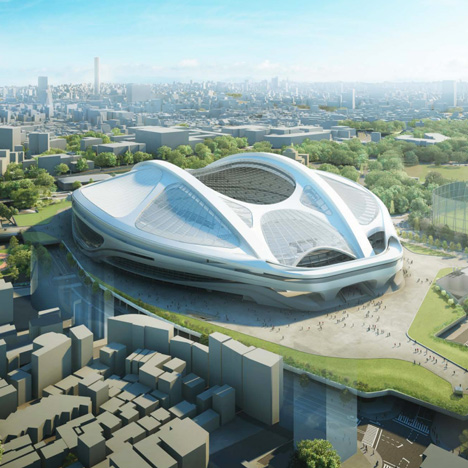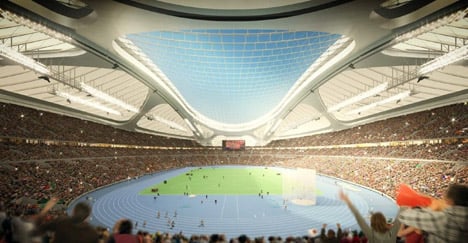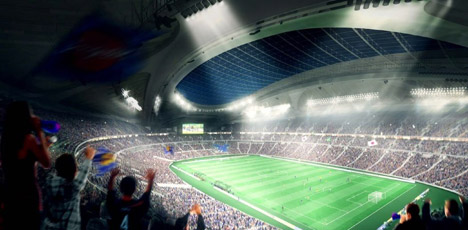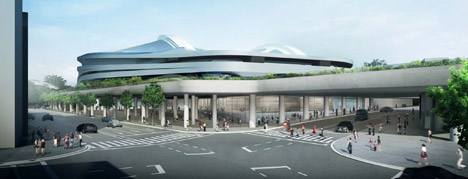Zaha Hadid's Tokyo stadium will be "a disgrace to future generations" says Arata Isozaki
News: Japanese architect Arata Isozaki has hit out at the redesign of Zaha Hadid's Tokyo 2020 Olympic stadium, branding it "a monumental mistake" that has left him "in despair".
In a lengthy statement released to the media, 83-year-old Isozaki – one of Japan's leading architects – said he was "shocked" to see the lack of "dynamism" in Zaha Hadid's newest proposal for the 80,000-seat stadium, which was recently redesigned following protests over the original scheme.
Isozaki likened the new proposal to "a turtle waiting for Japan to sink so that it can swim away".

"The sight left me in despair," said the architect, whose own works include the Palau Sant Jordi built in Barcelona for the 1992 Olympic Games and the Palasport Olimpico used during the Turin Winter Olympics of 2006.
"If the stadium gets built the way it is, Tokyo will surely be burdened with a gigantic white elephant," he said.
Hadid's earlier design for the stadium became the focus of controversy when Tokyo won the bid to host the games back in September last year. Architects including Toyo Ito, Sou Fujimoto, Kengo Kuma and Riken Yamamoto voiced their objections to its scale and cost.

Since then, Hadid has made changes to the shape of the building, specifying materials that will be visually lighter and more cost-efficient – a move that Isozaki said "satisfies nobody".
Isozaki, who saw the proposal exhibited at the Tokyo Opera City Art Gallery in Shinjuku, described the redesign as a compromise to Hadid's artistic vision. If it is built as proposed currently, he believes it will become "a disgrace to future generations".
Isozaki urged the organisers to either return to the original competition-winning design, or allow Hadid to completely redesign the complex.
"Her professional skills are outstanding. No matter how difficult the situation, with personal, active participation she is capable of leaving her signature on the design. However, not even a glimpse of that can be seen in the current revised proposal," he said.

The architect called for the brief to be altered, so that Hadid's stadium will no longer host the opening and closing ceremonies – making the stadium more financially viable.
These, he suggested, could instead be held outside the Imperial Palace moat at a purpose-built venue by SANAA principal Kazuyo Sejima, whose own stadium design was a runner up in the competition.
"By taking this route, we can present an event to the rest of the world that is unconstrained by the traditional size of an arena, against a backdrop of scenery that represents the heart of Japan, not just Tokyo," he said. "By doing so, we can create a new format for the Olympics of the 21st century, here in Tokyo."
Zaha Hadid's firm, who previously designed the aquatics centre for the London 2012 Olympics, responded: "As with all views on both sides of the discussion, we respect Mr Isozaki's right to express his thoughts."

Describing the current scheme as "user-focused, adaptable and sustainable", the studio added: "All projects around the world go through this process of design evolution. The stadium's scheme design has been developed with our Japanese partners and responds to the revised brief issued by the client earlier this year."